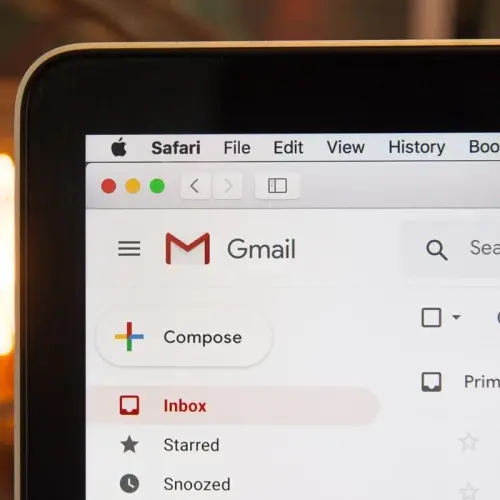Get access to exclusive updates, the latest news and the inside scoop 🍨

How To Do SMS Marketing
If you’re wondering how to do SMS marketing as part of your store's ecommerce strategy, our guide explains everything from start to finish.
Don't want to read the whole article? 😏Click here for chapters

Written by Madeleine
How to do SMS Marketing? 💬
SMS marketing (short message service marketing) is the practice of sending marketing content to prospective and current customers via text message.
Just like email marketing, the goal of SMS marketing is usually to; sell, educate, or build loyalty amongst an audience database. So, strategically speaking, the functionality of email and SMS marketing is very similar.
Similarly to email marketing, SMS marketing is another variation of marketing where the sender fully controls the list of messages that are distributed.
This means that businesses can either choose to send 1-on-1 messages or 1-to-many messages, depending on their goals.
If you’re familiar with the likes of email marketing, you will know how important it is to ensure that you capture the consent of your customers before sending them a message.
Naturally, the same rules will apply when an SMS marketing strategy is executed and Shopify have made it easier than ever for online stores to capture SMS consent from their customers in the stages of checkout.
To turn this feature on, simply follow the steps outlined here.
Once consent has been granted by a subscriber, SMS content will be able to be sent as one-off campaigns (such as flash sales and/ or automated messages) as part of a drip email marketing strategy.
SMS Marketing Strategy: How Does It Work? 📱
If you’re wondering how to do SMS marketing, this form of communication works by utilising a short code, which is the SMS equivalent of a company email address.
In other words, a shortcode is simply an abbreviated phone number of five or six digits, which is kind of as the name suggests - they’re short, so they’re easy to remember.
Then, to opt in to receive SMS messages, customers would need to text a keyword (such as ‘sign me up’) to this shortcode.
From there on out, the individuals who have chosen to be contacted by SMS will receive branded messages and campaign content from the business at hand.
Note: Subscribing to SMS messages is usually a deliberate act, which rarely leads to dead leads.
Therefore implementing an SMS marketing strategy is a healthy approach to making the most of omnichannel outlets, as the majority (if not all) of these leads will be intentional and active.
SMS Marketing Strategy: Reasons To Invest
So, now that we’ve taken a look at how to do SMS marketing, let’s dive a little deeper into the reasons why businesses frequently invest in this effective marketing strategy:
N0.1: Increased Engagement Rates
According to Gartner, SMS open rates can be as high as 98%, as compared to as little as 20% where email messages are concerned.
Additionally, SMS click-through rates can also reach 45%, which may shock email marketers who are used to generating around 6%.
At Bushbalm, the team have implemented SMS marketing into their business strategy for over a year and have shared some interesting comparison data for all of us to interpret.
Starting with the ‘welcome series’ of messages, the brand saw click-through rates of over 50%. That’s right, not open rates, click-through rates.
In comparison, the team typically sees 25% open rates where marketing emails are concerned and click-through rates as low as 2%.
It has also been stated that deliverability issues are virtually non-existent with SMS marketing, as this form of communication requires customers to opt-in. Therefore, an SMS list will only include phone numbers from the customers who want to be on it.
N0.2: Ease of Creation
Anyone who’s ever sent out an email campaign will know of the painstaking efforts involved when it comes to creating the perfect subject line to get that open rate on the rise, not to mention the perfect copy that gets people clicking through.
However, with SMS, only a couple of lines are required and you can forget about the design aspect that email marketing so frequently demands. Instead, just the inclusion of a little emoji or GIF is the perfect, yet simple way to make your SMS messages pop.
N0.3: Strengthened Customer Relationships
Above all else, the team at Bushbalm have found that SMS messages enable the business to build personal and loyal relationships with their customers.
Furthermore, texts are inherently easier to respond to, encouraging a 1-on-1 dialogue. So much so that the average response rate for SMS marketing is estimated to fall around 45%, whereas the average response rate for email marketing currently sits around 6%.
As a result, the team at Bushbalm have set up an SMS marketing strategy not only to send mass messages out to their recipient lists but to be able to engage with their customers directly within a success and support capacity.
SMS Marketing Strategy: The Challenges 🧗
Like everything in life, there will always be pros and cons and SMS marketing is no exception to this rule.
So, let’s take a look at the challenges of implementing an SMS marketing strategy below:
N0.1: Upfront Costs
For most people, their phone number is of higher value than their email address. So, as a result, merchants may find themselves needing to provide a greater incentive to capture the phone numbers of their customers.
In one signup campaign, Bushbalm initially tried to gather phone numbers without offering anything to their customers. However, once a 20% discount was offered, the company saw hundreds of sign-ups daily.
What’s more, it’s important to note that the cost of sending SMS messages with different providers will vary, depending on the software chosen.
Note: SMS costs can range from $0.50 - $1.75, compared to that of email marketing costs which come in around $0.15 - $0.35.
In Bushbalm’s experience, their ROI (return on investment) is higher, as the business sees roughly $1.3 earnings per message (EPM) from their automated flows. Equally around $.50 EPM is seen from their SMS campaigns.
For instance, if 1,000 new monthly signups were acquired and sent 1 SMS each, Bushbalm would generate around $1,300 in revenue, minus the $10 cost to send 1,000 messages to their recipient list.
N0.2: Smaller Subscriber Lists
SMS marketing is often seen as an ineffective outlet strategy due to the lower number of subscriptions and higher volume of unsubscribe rates compared to email marketing.
While it is true that merchants will typically receive fewer subscribers and a higher level of opt-outs, those who stay on the list will be incredibly engaged leads which are of a higher value than that of a larger but inactive list.
According to mediapost.com, 77% of consumers think positively about companies that offer SMS messages as a form of communication. The key is to be thoughtful about how often you send messages while ensuring that content remains relevant to the audience.
N0.3: Legalities
Another reason why online marketers tend to avoid SMS marketing is that they assume the legalities for this type of communication will be too complex, but that’s not true.
The main thing that merchants should know is that SMS marketing is a permission-based channel, which means that businesses will need the consent of their customers to send promotional text messages.
These opt-in messages must be fully compliant with the Telephone Consumer Protection Act (TCPA), which protects consumers from unregulated use of personal information.
Therefore, if you’re planning to use a Shopify app to send SMS messages, you can rest assured knowing that they are already TCPA compliant.
SMS Marketing Strategy: Shopify Apps
Before starting an SMS marketing campaign, retailers will need to build a list of phone numbers with opt-in consent to send promotional messages to a recipient list.
Typically, contact information is gathered from prospects and customers, so if you aren’t already generating traffic to your site, SMS might not be for you at this moment in time.
Instead, we’d recommend spending weeks (or even months) building up your SMS contact list before moving forward with this marketing strategy.
However, for the Shopify store owners who are just getting started, learning how to do SMS marketing is as easy as downloading an app that will contain the necessary built-in compliances via the Shopify App Store.
Retailers can find lots of solutions for SMS marketing here, but here are four of our favourites:
Omnisend: In our opinion, Omnisend is one of the best SMS and email integrations for Shopify stores to utilise, as it’s super easy to incorporate within a digital marketing strategy.
SMS Bump: Another great SMS marketing app that is used by lots of Shopify and Shopify Plus customers is SMS Bump.
Attentive Mobile: This next application is ideal for the bigger brands on Shopify that have hundreds and thousands of subscribers.
ManyChat: Last but not least, ManyChat is a great option for the stores that are looking to run international campaigns. So, if that’s you, check it out!
SMS Marketing Strategy: Best Practices 📈
N0.1: Easy Opt-Out
As we’re sure you’ve gathered, SMS marketing requires the trust of the buyer more than any other digital marketing channel.
Therefore, one way in which retailers do this is by making it easy for their customers to opt in and out of an SMS list.
Sure, you’ll likely lose some subscribers in the process, but those who choose to remain will become high-quality leads. After all, they’re there because they want to be.
Another way to put the customer in control is by having them text the business to join its mailing list.
Postscript is another application on Shopify which has a lovely feature where customers can text the business at hand to confirm their subscription to its mailing list.
N0.2: Inform, Don’t Promote
Since it’s easy to opt-out of promotional SMS messages, retailers should aim to be incredibly considerate of their customer’s inboxes.
As a rule of thumb, most of your messages should be related to an order, as these topics are always useful, but promotional messages should be sent few and far between. So, no more than once a week in our opinion.
N0.3: Conversational SMS
The beauty of learning how to do SMS marketing is that it's inherently conversational. SMS is all about back and forth dialogue and marketing through SMS is no different.
This makes SMS a fantastic way to generate reviews and product feedback directly from your store's customers.
If you’re looking for a way to get chatty with your audience, try sending a text to your recipient list asking for their opinion on future product lines and ideas.
This type of engagement is what leads users to get excited by your messages. SMS can be a push channel as well as a strong pull channel too, so be sure to remember this going forward.
SMS Marketing Strategy: Popular Methods
So, now that we’ve covered the principles of SMS marketing, let’s take a look at how the strategy’s popular methods have been executed by the Bushbalm team:
N0.1: Flash Sale Messages
Who wouldn’t want to receive flash sale messages from their favourite brand? A short and snappy SMS is a great way to promote one-off flash sales or major promotions that are dropping in your store.
N0.2: Hype-Up Texts
It’s a bit of an unspoken rule that merchants should never launch a flash sale without hyping it up first. So, be sure to send a text to your recipient list a few days before the flash sale drops to increase your store’s conversions.
Many consumers also like to think about their purchases ahead of time, so it's wise to give your VIP customers a heads up before your sales go live.
N0.3: Feedback Messages
Thanks to its conversational nature, SMS is great for striking up engaging and prosperous conversations with customers.
For instance, when Bushbalm comes up with new product ideas, the team often sends an SMS message to its customers, asking for their opinion.
If they reply, the company will have earnt itself engaging 1-on-1 discussions which not only brings the brand’s shopper’s into the process but will also increase the likelihood that they’ll purchase the product when it’s available.
N0.4: Back-In-Stock Messages
Last but not least, back-in-stock messages inform customers of sold-out inventory. It’s a gentle yet effective way to re-engage past visitors with a business.
Note: If you’re looking to increase your store’s average order value, try combining SMS messages with free shipping minimums or other tactics. Transactional messages are impactful and simple to automate.
So, that’s it from us for today’s article. We hope that you have found our guide on how to do SMS marketing useful. Is an SMS marketing strategy already part of your brand’s setup? Reach out and let us know.
If you’re actively looking to work with a Shopify agency designer or developer to assist you with your business, we’d love to hear from you. Get in touch to get started!
Get Started with Shopify
Looking to get started with Shopify? Take advantage of Shopify's 14-day free trial, no credit card is required.
If you're actively looking to work with a Shopify agency designer or developer to assist you with your business, we'd love to hear from you. Get in touch to get started!
Want to read some more?
Have a look over more posts related to this one















